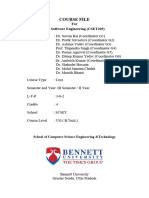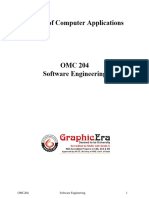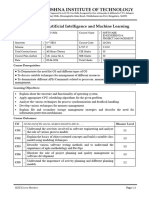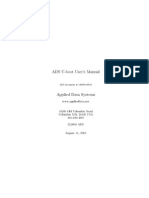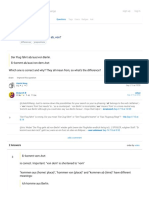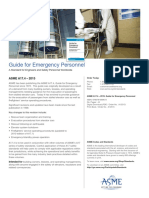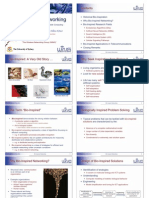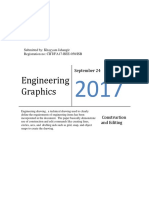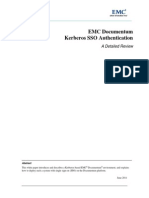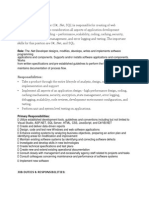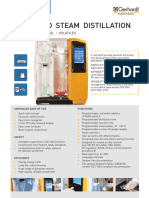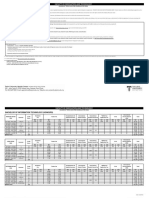Course Content
SEMESTER – IV
Course Name : Software Course Code:
Engineering BIS/CSSE404
Number of Lecture Hours :03 CIE Marks : 50
/
Week
Number of Tutorial / :00 SEE Marks : 50
Practical Hours / Week
Total Number of Lecture : 40 SEE Duration : 03
+ Hours
Tutorial/Practical Hours
L:T:P : 3:0:0 CREDITS : 03
Course perquisites
Students should be familiar with a number of programming languages.
Course Overview
Software engineering is a detailed study of software design, development, testing, and
maintenance. Students will gain knowledge on various software development, testing and
maintenance processes practiced in the Software industry.
Course Learning Outcomes (CLO)
● To understand the different phases of software development with professional and ethical
responsibility.
● To come up with an idea of using various process models in the software industry according to
given circumstances.
● To gain the knowledge on Analysis, Design, Implementation, Testing and Maintenance
processes of a software project.
TEACHING
MODULES
HOURS
MODULE 1
Introduction: Professional Software Development, Software Engineering
Ethics. Case Studies.
Software Processes Models: Software process models. Process
activities. Coping with Change. 08
Agile Software Development: Agile methods. Agile development
techniques. Agile project management. Scaling agile methods.
SLT: Case Study-Insulin Pump
Textbook 1: Ch. 1, Ch. 2.1, 2.2, 2.3 Ch. 3
MODULE 2
Requirements Engineering: Functional and non-functional
requirements,
Requirements Engineering Processes, Requirements Elicitation, Requirements
Specification, Requirements validation, Requirements change. 08
System Modelling: Context models. Interaction models. Structural models.
Behavioural models.
SLT: Model-driven architecture
Textbook 1: Ch. 4, Ch. 5
�MODULE 3
Design and Implementation: Object-oriented design using the UML
Project Planning: Software pricing, Plan-driven development, Project
08
scheduling, Agile Planning, Estimation techniques. COCOMO cost modelling.
SLT: Design Patterns
Textbook 1: Ch. 7.1,7.2 Ch. 23
MODULE 4
A Perspective on Testing: Basic Definitions, Test Cases, Insights from a
Venn Diagram, Identifying Test Cases, Levels of Testing.
Examples: Generalized Pseudocode, The Triangle Problem, The Next Date
Function, The Commission Problem.
08
Software Testing Types: Development testing, Test-driven development,
Release testing, User testing.
SLT: Basics of DevOps
Textbook 1: Ch. 8
Textbook 2: Ch. 1, Ch. 2
MODULE 5
Introduction to Project Management:
Introduction, Project and Importance of Project Management, Contract
Management, Activities Covered by Software Project Management, Plans, Methods
and Methodologies, Some ways of categorizing Software Projects, Stakeholders,
08
Setting Objectives, Business Case, Project Success and Failure, Management and
Management Control, Project Management life cycle.
SLT: Traditional versus Modern Project Management
Practices.
Textbook 3: Ch. 1.1 to 1.17
Text Books:
1. Ian Sommerville: Software Engineering, 10th Edition, Pearson Education, 2017.
2. Paul C. Jorgensen: Software Testing - A Craftsman’s Approach, Fourth Edition, Auerbach
Publications.
3. Bob Hughes, Mike Cotterell, Rajib Mall: Software Project Management, 6th Edition, McGraw
Hill Education, 2018.
Reference Books:
1. Roger S. Pressman: Software Engineering-A Practitioner's approach, 8/e Paperback – 19 March
2019.Tata McGraw Hill.
2. Aditya P Mathur: Foundations of Software Testing, Pearson Education 2015 edition.
Course Outcomes (COs)
At the end of the course students will be able to
Explain the concepts of software development with professional and ethical
CO1
responsibility as a software engineer.
CO2 Illustrate various phases of the software development lifecycle.
CO3 Analyze the role of project planning in software development.
Manage project effectively, including the management of time and costs, to
CO4
satisfy the needs of the undertaking project. (Additional CO – PO11)
� CO – PO – PSO Matrix
CO PSO
PO PO PO PO PO PO PO PO PO PO1 PO1 PSO PSO PSO PSO4
1 2 3 4 5 6 7 8 9 0 1 1 2 3
CO1 2 2
CO2 3 3
CO3 2 2
CO4 2 2
Avg 2.5 2 2 2.25
.










